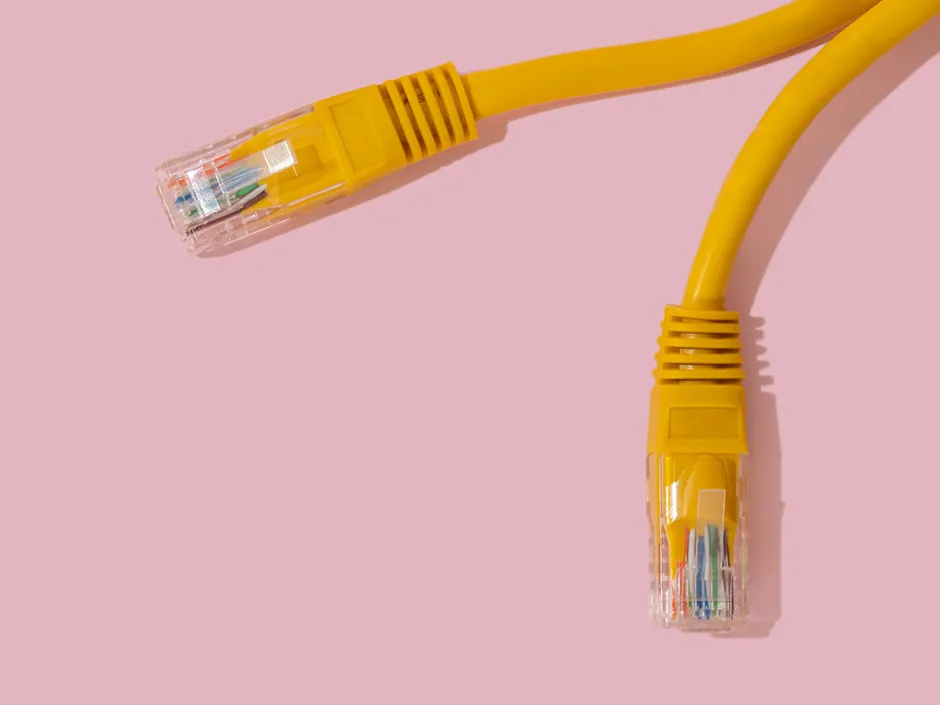Our home networks are under more pressure than ever before. Your internet connection has to deliver Netflix, Fortnite, Twitch, YouTube, TikTok, Spotify and whatever else to several devices, all at once, without skipping a beat.
To add to that headache, many of us are starting to invite a brigade of smart tech - like smart speakers, thermostats and lights – into our homes that demand a reliable Wi-Fi connection to work their magic.
So, if you find yourself a victim of lag while playing FIFA or you’re constantly waiting for important files to upload, here are some suggestions for what you can do to give your network a fighting chance. And once you've got that figured out, here's our list of the best smart home devices.
1
Plug your device in with an ethernet cable

Wireless life is the best life, but it’s always worth checking everything’s working OK. For example, if your laptop struggles with video calls, try connecting it to your router directly with an ethernet cable. If you see an improvement, that tells you something might be up with your wireless connection and it might be time to call your internet provider.
Ultimately a wired connection is a fast ticket to speedy internet, so if you’ve got lots of people sharing a connection at home, plug yourself in to get an edge.
2
Keep your connection secure
It might seem obvious, but make sure your Wi-Fi is password protected. Leaving your Wi-Fi unsecured is a bit like yelling out each number of your pin code every time you use your bank card: sooner or later someone is going to take advantage.
These days most internet providers will provide a router with a password loaded on and it’s the best way to make sure no one can hop on and start watching Netflix at the expense of your bandwidth.
3
Move your router
Think about where your router is positioned to give it the best possible environment to fire that Wi-Fi to the devices that need it. Ideally, you’ll want it positioned in an open space, away from other electrical devices that might obstruct it from doing its job.
You do want to keep it as close as possible to the devices that will want to make most regular or continuous use of that connectivity. Get that router up high as well if you can, to give it the optimum conditions to deliver that speedy connection.
4
Understand your router’s bands.

Most modern routers use 2.4GHz and 5GHz frequency bands to deliver data and those bands are broken down into channels. You may spot the two frequency bands pop up as labels to their own Wi-Fi networks when you set up your router. Generally speaking, the 2.4GHz band is slower, but the signal is likely to be more reliable over larger distances. Meanwhile, 5GHz will provide faster speeds to devices close to the router. Switching between the two may help you to get a faster or more reliable connection.
But that’s just half the story. Every time you connect to a Wi-Fi network, you’ll notice you’re never far from a dozen other networks all trying to do the same job. In this situation, the router sending data to your device is a bit like two people trying to have a conversation with each other from opposite ends of a packed bar (remember those).
To navigate the noise, a good internet provider will supply you with a router that can pick out quiet channels to fire data around your house clearly. We wouldn’t recommend you fiddle with these settings yourself, but this is just one (of many reasons) why it’s worth checking your internet hardware is up to date.
5
Play with the antenna position
This is one for anyone with routers that include external antennas. Positioning those antennas to stand vertically can be a way to help improve speeds. This also ties in with the idea of router placement and by raising the entire device up and getting those antennas standing high too, you’re giving them the best opportunity to deliver optimal data speeds.
6
Try a Wi-Fi extender
You can add some additional hardware into your setup and bring a Wi-Fi extender into the equation. This device can be connected via a wire or wirelessly to your router, taking the existing signal and is able to give it a boost where it might be struggling to reach places in your home.
You might have some Wi-Fi dead zones or there’s something obstructing that signal coming through nice and clear to the devices in your home that need it most. That’s where an extender can come to the rescue. That said, we’d suggest you use a mesh network instead, since a range extender will effectively create a second network that’ll you’ll have to jump on every time you go to a different spot.
7
Or better still, try a mesh network

If you want to turn things up a notch in terms of spreading that Wi-Fi coverage across your home, you could set up a mesh network. This involves adding multiple Wi-Fi points with additional devices that create a larger single network for all of your connected kit to tap into.
It can help to reduce the chances of drop-outs as devices can jump onto other Wi-Fi points in your mesh network. It’s a good option if you have a lot of smart home tech that require a speedy, reliable connection from a single router.
We’ve actually pulled together a handy guide on mesh networks explaining the benefits and how to get one set up in your home.